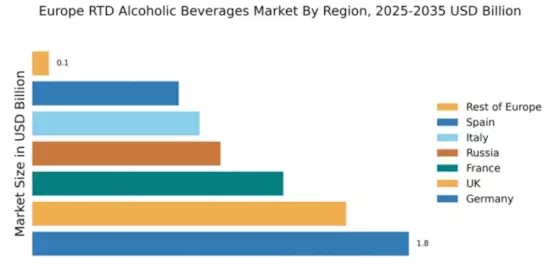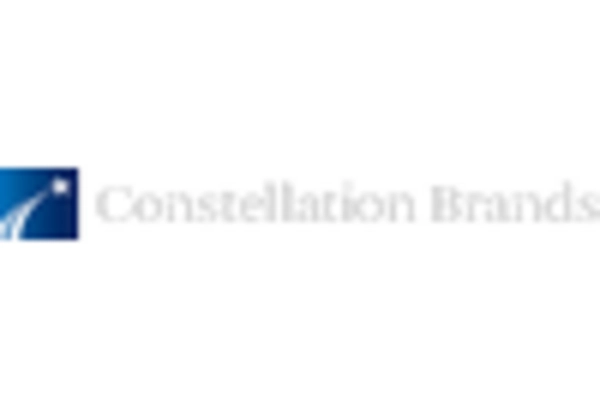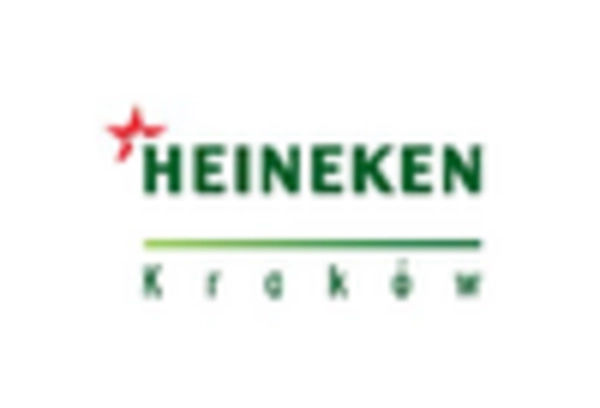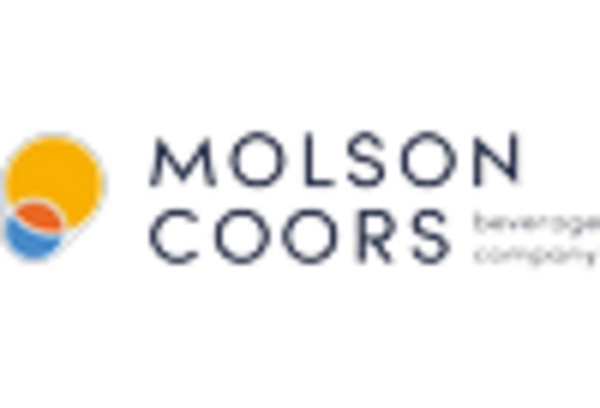Evolving Consumer Preferences
The rtd alcoholic-beverages market in Europe is significantly influenced by evolving consumer preferences. There is a growing inclination towards unique flavors and innovative combinations, as consumers seek to explore new taste experiences. This trend is reflected in the increasing popularity of craft and artisanal products, which often feature distinctive ingredients and local sourcing. In 2025, it is projected that flavor innovation will contribute to a 20% increase in market growth. Additionally, the rise of social media has amplified the demand for visually appealing products, prompting brands to invest in attractive packaging and marketing strategies. As consumers become more adventurous in their choices, the rtd alcoholic-beverages market is likely to see a diversification of offerings, catering to a wider array of tastes and preferences.
Social and Cultural Influences
the market in Europe is significantly shaped by social and cultural influences.. Changing social norms and attitudes towards alcohol consumption are impacting consumer choices, with a noticeable shift towards moderation and mindful drinking. This cultural evolution is prompting brands to develop lower-alcohol and alcohol-free options, catering to health-conscious consumers. In 2025, it is projected that products with reduced alcohol content will represent a growing segment of the market, potentially reaching 15% of total sales. Additionally, social gatherings and events continue to drive demand for rtd beverages, as consumers seek convenient options for social occasions. As cultural attitudes evolve, the rtd alcoholic-beverages market is likely to adapt, reflecting the changing landscape of consumer preferences.
Regulatory Changes and Compliance
the market in Europe is subject to stringent regulatory changes and compliance requirements.. Governments are increasingly focusing on health and safety standards, which directly impact product formulation and labeling. In recent years, there has been a push for clearer labeling regarding alcohol content and nutritional information, which is expected to influence consumer purchasing decisions. By 2025, it is anticipated that compliance with these regulations will become a critical factor for market players, as non-compliance could lead to significant financial penalties. This regulatory landscape may also encourage innovation, as companies strive to meet new standards while maintaining product appeal. Consequently, the ability to navigate these regulations effectively will likely determine the success of brands within the rtd alcoholic-beverages market.
Rise of E-commerce and Online Retail
the market in Europe is witnessing a substantial rise in e-commerce and online retail channels.. The convenience of online shopping has transformed consumer purchasing behavior, with many opting to buy alcoholic beverages from the comfort of their homes. In 2025, it is estimated that online sales will account for approximately 25% of total market revenue. This shift is particularly pronounced among younger consumers, who are more inclined to explore and purchase products online. Retailers are responding by enhancing their digital presence and offering exclusive online promotions to attract customers. The growth of e-commerce is likely to continue reshaping the rtd alcoholic-beverages market, as brands adapt their strategies to leverage this trend and reach a broader audience.
Convenience and On-the-Go Consumption
the market in Europe is experiencing a notable shift towards convenience and on-the-go consumption.. Busy lifestyles and the increasing demand for ready-to-drink options are driving this trend. Consumers are seeking products that fit seamlessly into their daily routines, leading to a rise in portable packaging and single-serve formats. In 2025, it is estimated that the convenience segment will account for approximately 35% of the total market share. This shift is particularly evident among younger demographics, who prioritize ease of access and quick consumption. As a result, brands are innovating to create products that cater to this demand, enhancing their appeal in a competitive landscape. The focus on convenience is likely to continue shaping the rtd alcoholic-beverages market in Europe, as manufacturers adapt to evolving consumer preferences.


















Leave a Comment